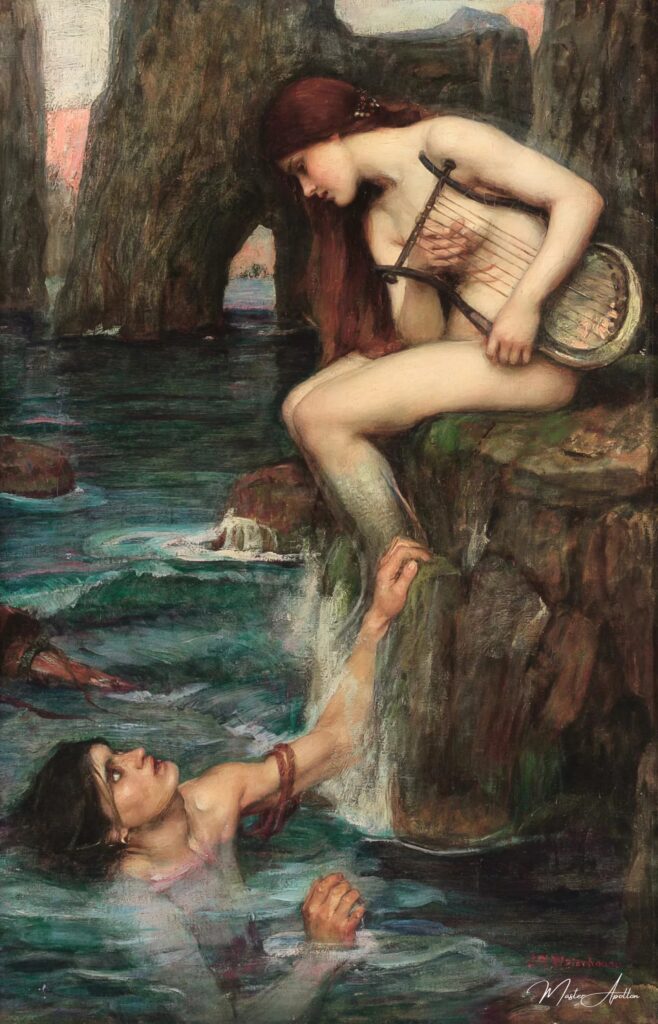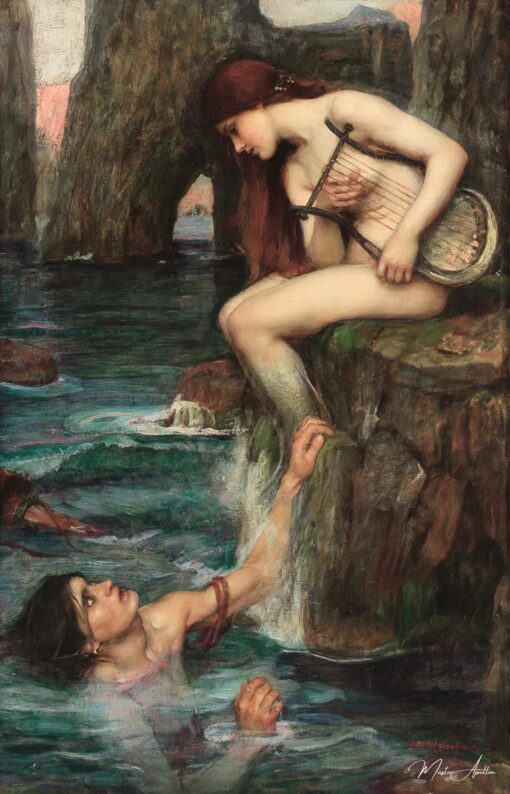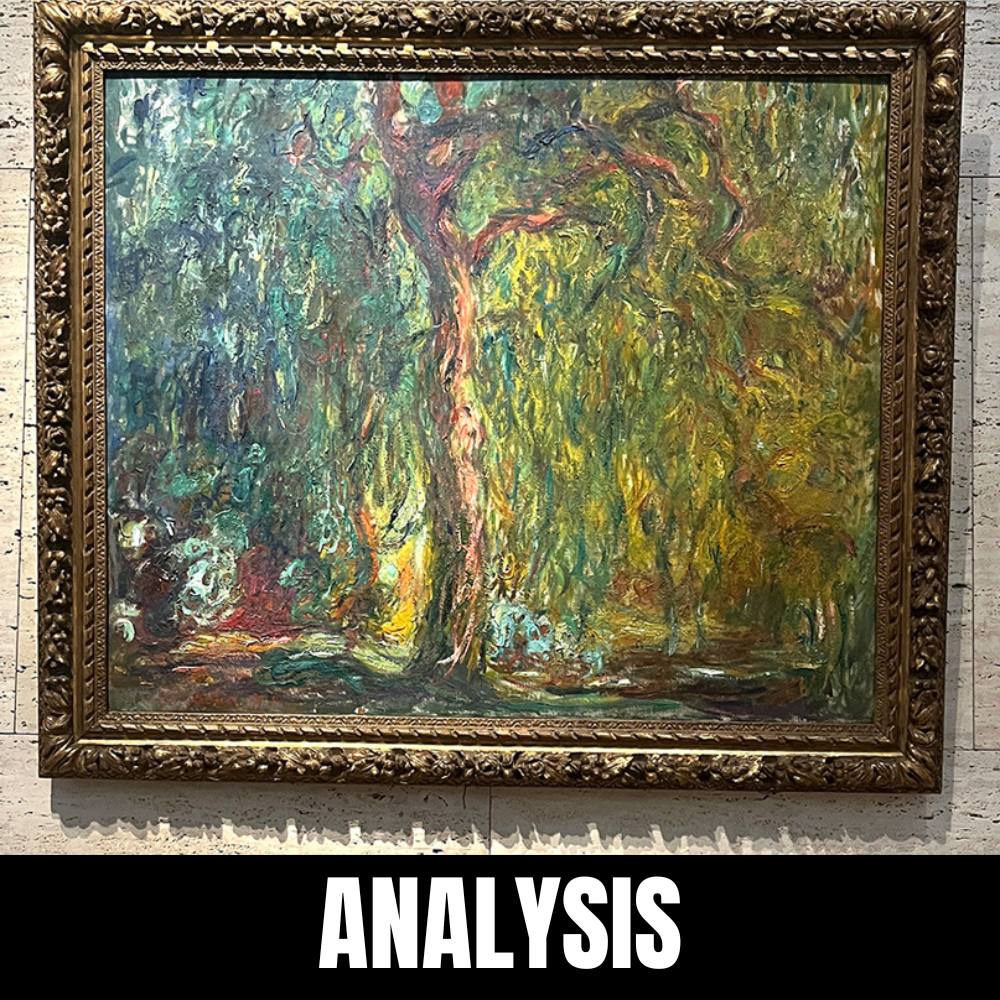Your cart is currently empty!

The Siren – John William Waterhouse
Immerse yourself in the enchanting world of art with our highest quality oil painting reproduction of “The Siren” by John William Waterhouse. This exquisite piece captures the haunting beauty and allure of the mythical siren, her ethereal presence drawing you into a realm of mystery and longing.
Every brushstroke is meticulously recreated, reflecting Waterhouse’s masterful technique and the v…
The Alluring Danger: Analyzing Waterhouse’s ‘The Siren’
In the realm of Pre-Raphaelite art, few paintings capture the dangerous allure of mythological beings quite like John William Waterhouse’s The Siren (c. 1900). This masterpiece, currently held in a private collection, weaves together themes of beauty, peril, and the eternal dance between power and vulnerability.
The Fatal Song: Composition and Symbolism
Waterhouse’s composition draws viewers into a dramatic scene perched between sky and sea. A beguiling siren sits atop weathered cliffs, her figure commanding the upper portion of the canvas. Below, in the churning waters, a doomed sailor floats, transfixed by her otherworldly presence. The artist’s choice to position the siren above her victim emphasizes her dominance while creating a visual representation of the power dynamics at play.
The siren clutches a lyre, her traditional instrument of seduction, while her gaze bears down upon the helpless mariner. This vertical relationship between predator and prey creates a tense narrative moment, capturing the instant before inevitable tragedy. The painting serves as a frozen frame in an ancient tale of attraction and destruction.
Feminine Power in Victorian Art
The Siren exemplifies Waterhouse’s fascination with powerful female figures drawn from mythology and literature. In an era when Victorian society often confined women to rigid social roles, his paintings frequently explored characters who wielded supernatural or mythological power. The siren represents an untamed feminine force – beautiful yet lethal, alluring yet dangerous.
This exploration of feminine power wasn’t unique to Waterhouse, but his treatment stands out for its complexity. The siren isn’t portrayed as simply malevolent; rather, she embodies an amoral natural force, as inevitable as the tides themselves. Her beauty is both ethereal and terrible, challenging viewers to contemplate the thin line between desire and destruction.
The Painting’s Legacy and Value
The enduring appeal of The Siren is reflected in its steadily increasing value over the years. From an estimated worth of one million pounds in 2003, the painting’s value soared to approximately five million USD when it was sold by Seymour Stein in 2018. This dramatic appreciation speaks to both Waterhouse’s growing reputation and the timeless resonance of the painting’s themes.
A Broader Context
The Siren belongs to a rich tradition of depicting these dangerous enchantresses in art. From ancient Greek pottery to modern interpretations, sirens have long served as metaphors for the seductive power of beauty and the perils of unchecked desire. Waterhouse’s contribution to this tradition stands out for its psychological depth and technical mastery.
Far from simply illustrating a mythological scene, the painting invites viewers to contemplate universal themes: the price of desire, the nature of beauty, and the complex relationship between power and vulnerability. In our modern context, these themes remain surprisingly relevant, perhaps explaining why The Siren continues to captivate audiences more than a century after its creation.
Conclusion
Waterhouse’s The Siren represents more than just a moment in art history; it’s a meditation on eternal themes that continue to resonate with contemporary viewers. Through his masterful technique and deep understanding of mythology, Waterhouse created a work that transcends its Victorian origins to speak to universal human experiences of desire, danger, and the often-blurry line between the two.
John William Waterhouse
John William Waterhouse was a British painter known for his enchanting depictions of mythological and literary themes, characterized by rich colors, emotional depth, and a focus on female figures that often evoke a sense of longing and beauty.





Leave a Reply